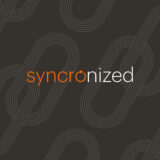MSPs that provide IT services for clients can benefit greatly from an IT service management (ITSM) tool. ITSM tools can take over time-consuming project management and administrative tasks, freeing up technicians to spend more time on billable client work. The more billable work your team can handle, the more you can grow your MSP business.
This post examines what an ITSM tool is, why it’s important, and how to choose the best one to improve service management.
What is an ITSM tool?
An ITSM tool is a software platform that helps MSPs perform client work, like managing tasks and workflows. Features of an IT service management tool include:
- Automated security patch management
- Remote access and support for quick issue resolution
- Scripting to automate workflows
- Real-time system health monitoring and alerts
- Ticket metric reporting and analytics
- Automated ticket creation based on RMM alerts
Some ITSM tools also include internal business management functions, like automated invoicing, service agreement reconciliation, and performance analytics.
Why is an ITSM tool important for MSPs?
ITSM tools include features that help MSPs stay organized, work more efficiently, and deliver on client expectations. Additionally, ITSM tools help MSPs align their IT strategies with their business objectives, ensuring their services support overall business goals.
Some of the primary reasons MSPs need an IT service management tool include the following:
Standardizing processes for service management
MSPs may manage a variety of endpoints — laptops, mobile devices, software, and more — for multiple clients. An ITSM tool helps standardize processes for managing all of those moving parts and ensures services stay within scope.
Ticketing management to improve service delivery
In a perfect world, all IT tickets would arrive incrementally throughout the work week via the same mode of communication. But in reality, a flood of tickets can come in all at once and in a variety of ways, leaving MSPs scrambling to prioritize tasks when they could be working to resolve client issues instead.
An ITSM tool with a ticketing management system pulls all tickets — even those that arrive in a late-night email — into a central platform and prioritizes them for technicians. The best MSP ticketing systems also include a time-tracking feature that automatically allocates technicians’ time to the correct client.
Automating tasks to reduce administrative demands on the IT service desk
Most IT service management tools include automation for routine processes like patch management, user password resets, and virus scans. MSPs can also define custom rules for process automation — like how to assign tickets based on the nature of the client request.
Remote monitoring and management for better incident management
Service management tools, including remote monitoring and management (RMM) features, give MSPs real-time insights into all client endpoints. Should a printer go offline or a laptop suffer a critical system error, RMM alerts can ensure a technician addresses the problem quickly — often before the client even realizes there’s a problem.
Documentation for service request management
Service management tools also document every task and its associated actions, including client communication. That means MSPs can access a full history of tasks, clients, and special projects — and easily produce a report if needed.
Detailed documentation can also show managers whether internal processes are working efficiently and if there are new recurring client requests that could necessitate additional automation.
Choosing the right tool for efficient service management
Before shopping around, it’s important to assess how technicians spend their time and which tasks are a drag on efficiency. As a general rule, any tasks that are more about managing work instead of doing work are good candidates to shift from the service desk to IT service management tools.
After talking with the team and gathering input, management can begin evaluating their options for ITSM software.
The following are some key points to consider:
Integrations with existing MSP software
An ITSM tool should supplement — not replace — the technology MSPs rely on every day. If tools like Slack, IT Glue, and Bitdefender are essential to operations, adding new software should always integrate seamlessly with your existing tech stack.
Security and data backup
MSPs should always prioritize implementing ITSM software that offers top-tier security, including a process for securely backing up data across multiple database servers. The best ones offer SOC 2 compliance, a credential that businesses earn only by documenting their rigorous processes for security.
Self-service portal for educational resources and troubleshooting
Even though MSPs usually have little difficulty launching new ITSM software, they may still want access to self-guided resources and troubleshooting via a self-service portal. A knowledge base and user community can help MSPs get up to speed with their new system without having to contact support.
Transparent pricing model
Simple, transparent pricing helps MSPs accurately predict costs even as they scale. A pricing model that charges based on the number of users, not the number of endpoints, is the best for assessing tool costs as an MSP takes on more clients.
Operations management
An ITSM tool can do a lot more than simplify work for technicians. Some platforms also include features that are essential for operations management, like service contract management, automated billing, and profitability reports.
Customer testimonials
Reading comments from clients who use service management software is a great way to understand the value of the product and the problems it solves. Customer stories reveal a lot about the advantages of one product over another and the specific features customers have found most useful.
Free trial
A zero-commitment software trial lets MSPs try an ITSM tool and compare it to any other platforms they’re considering.
The best ITSM tool for MSP growth
If you’re looking for the best ITSM tool to grow your MSP, Syncro offers an all-in-one ITSM for IT leaders, bringing every aspect of running and managing an MSP into a single source of truth.
With an active user community and script library, technicians can quickly implement automations and functionality without having to develop a new solution or write new code.
Find out why MSPs rely on Syncro to optimize operations, support their internal team, and demonstrate ROI for clients. Start your no-obligation trial today.
Frequently asked questions
What are the benefits of ITSM tools?
Effective ITSM software enables IT leaders to:
- Improve service management
- Streamline business processes
- Reduce the administrative burden on the IT service desk
- Allow technicians to focus on service delivery
- Manage service requests efficiently
- Increase customer satisfaction
- Boost efficiency
- Free up time to take on new clients and grow your MSP
MSPs of all sizes can grow their capabilities with an ITSM tool. Technicians have more time for problem-solving and service delivery, admins spend less time on operations management, and customers enjoy greater transparency about how MSPs work.
How does a service management tool help MSPs grow?
ITSM tools take time-consuming project management and administrative tasks off technicians’ plates, which allows them to spend more time on billable client work. This additional capacity can allow you to take on more client work and grow your MSP business.
What types of tasks do service management tools automate?
ITSM software can help with the following kinds of tasks:
- Standardizing processes
- Ticketing management
- Automating routine processes
- Remote monitoring and management
What are the top ITSM tools for MSPs?
The top ITSM tools for MSPs include:
- Syncro: A comprehensive MSP platform that includes features such as remote monitoring and asset management, professional services automation, one-click remote access, and integrations with other tools.
- SolarWinds Service Desk: A cloud-based ITSM platform that provides features such as asset management, incident management, and change management. Unlike Syncro, SolarWinds Service Desk doesn’t offer PSA features.
- SysAid: An ITSM tool that includes features such as help desk, service automation, and asset management. This platform is for service desks across several sectors; it’s not specifically for MSPs.
- Freshservice: A cloud-based ITSM platform for enterprise-level, industry-specific IT teams that includes features for incident management, problem management, and change management.
Share














